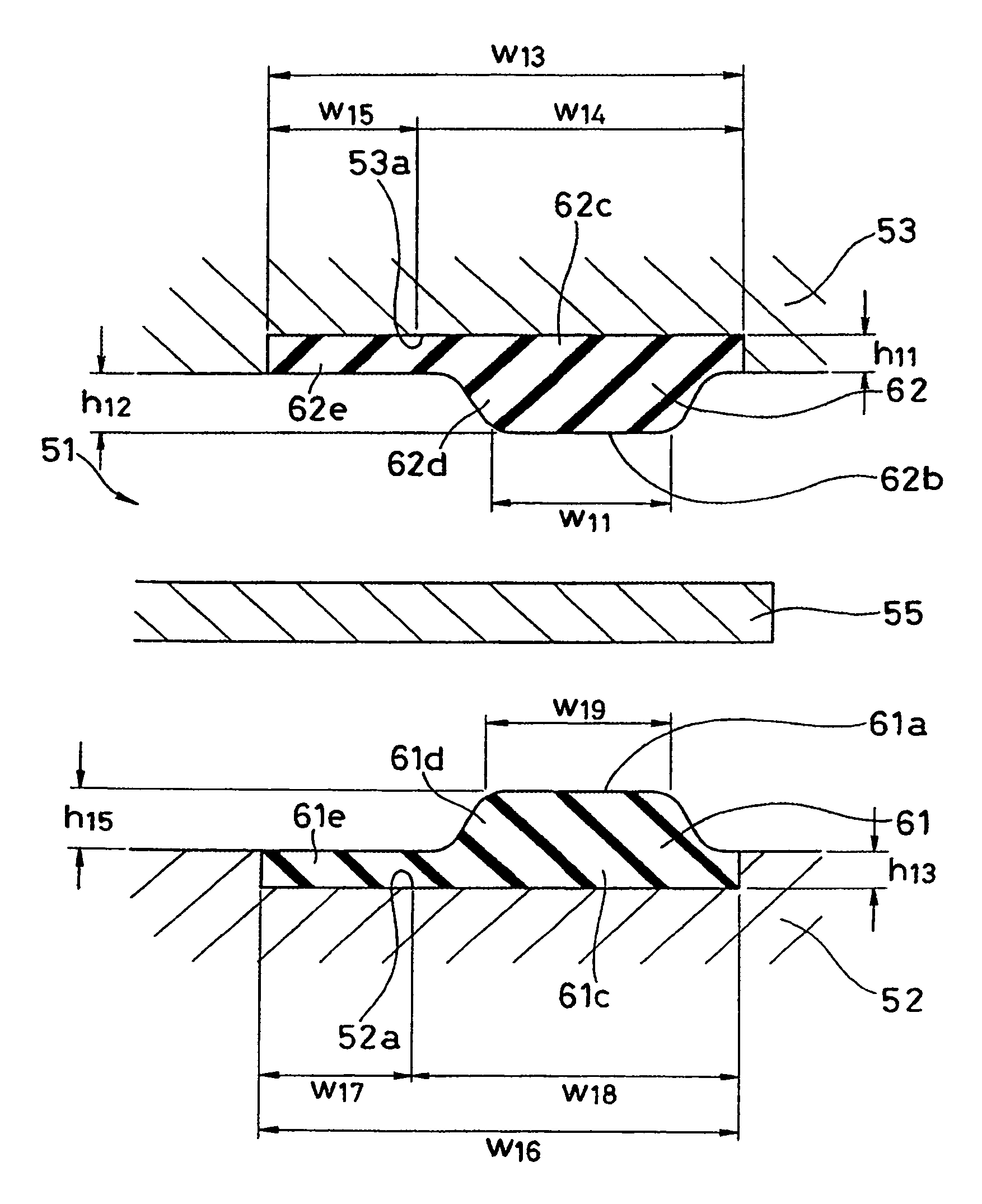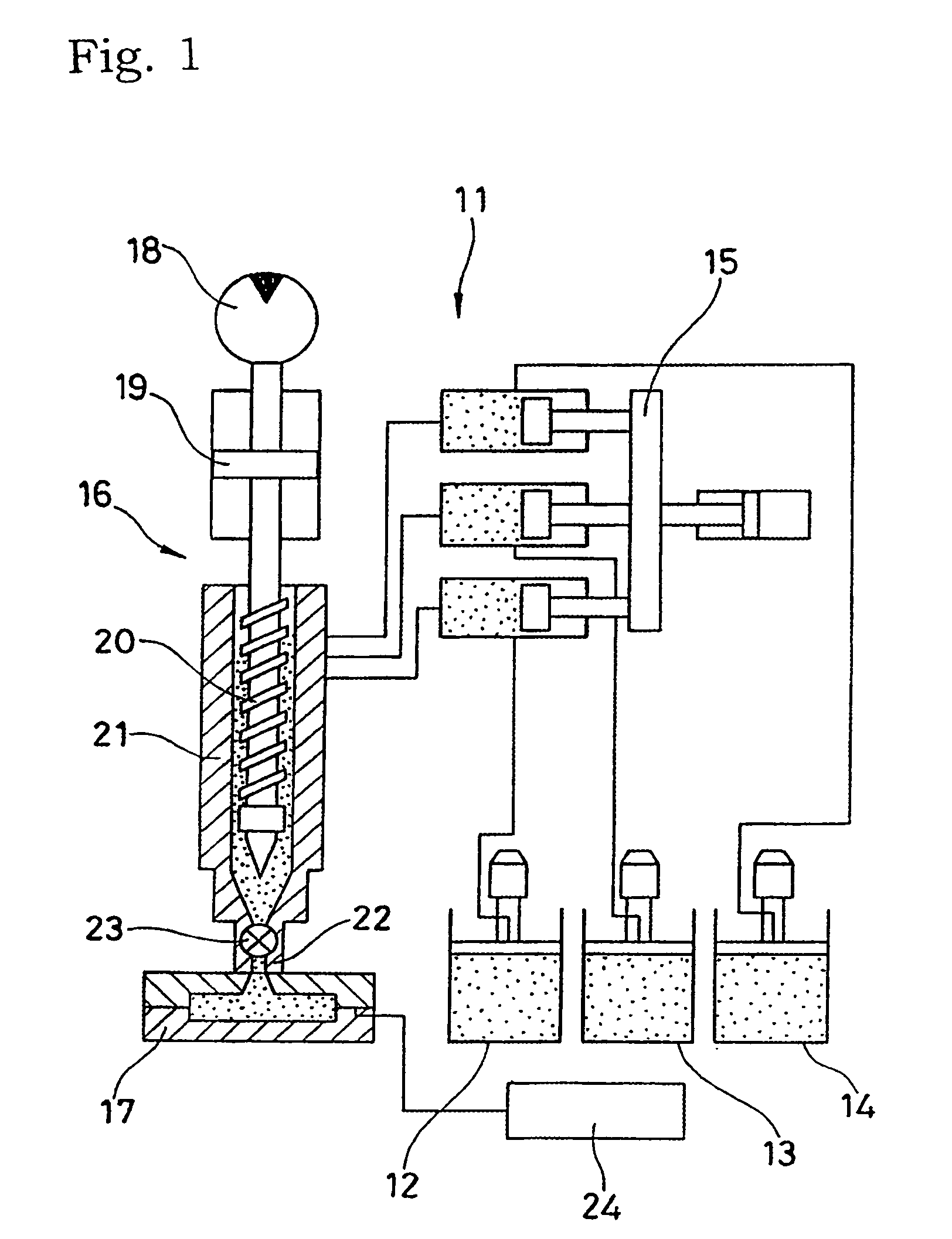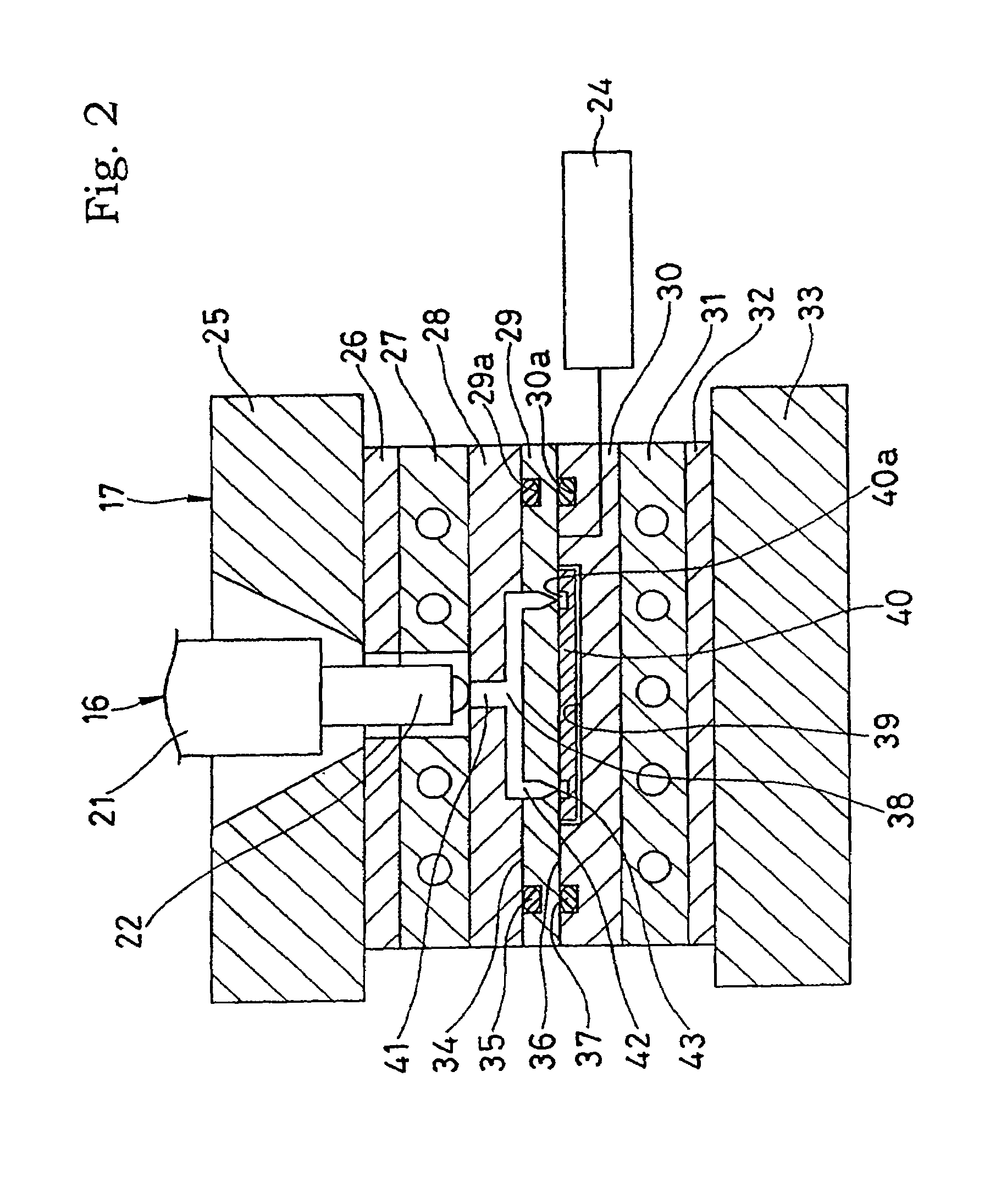Gasket for fuel cell and method of forming it
a fuel cell and gasket technology, applied in the field of gaskets for fuel cells, can solve the problems of obstructing the formation of gaskets, obstructing the sealing performance, and the inability to simultaneously satisfy the thinness of seals, so as to improve the assembling property, prevent the position shift, and thin the seal portion
- Summary
- Abstract
- Description
- Claims
- Application Information
AI Technical Summary
Benefits of technology
Problems solved by technology
Method used
Image
Examples
first embodiment
[0067]FIG. 1 shows a liquid injection molding apparatus 11 used for executing a method of forming a gasket in accordance with a first embodiment of the present invention. A gasket (also refer to a gasket lip or a gasket main body) is formed by injecting a molding material supplied from a base resin tank 12, a coloring agent tank 13 and a setting agent tank 14 to an injection apparatus 16 via a material supplying plunger 15, into a metal mold 17 from the injection apparatus 16. The injection apparatus 16 is provided with a screw 20 driven in accordance with an operation of a hydraulic motor 18 and an injection cylinder 19, and an injection cylinder 21 within which the screw 20 is inserted, and a shut-off valve 23 preventing an inflow of the molding material is arranged within a nozzle 22 at a front end of the injection cylinder 21 so as to be freely opened and closed. Further, an evacuation apparatus 24 constituted by a vacuum pump is connected to the metal mold 17.
[0068]FIG. 2 shows...
second embodiment
[0074]In a second embodiment in accordance with the present invention shown in FIG. 4, groove portions 40a and 40b are formed so as to correspond to each other on an upper surface and a lower surface of a flat surface plate porous carbon member 40 previously placed in a cavity space 39, and as shown in FIG. 5A in an enlarged manner, the groove portions 40a and 40b are communicated with each other via a through hole (also referred as a communication hole) 40c open to a bottom surface of each of the groove portions 40a and 40b. The through hole 40 is structured, for example, a plurality of through holes having a diameter of 1 mm are formed at an interval between 10 and 20 mm.
[0075]Accordingly, when the molding material of the gasket is supplied to the carbon member 40, as shown in FIG. 5B, the gaskets 7 and 8 are integrally formed with both of the groove portions 40a and 40b via the through hole 40c simultaneously, whereby it is possible to realize making the seal portion thin, improv...
third embodiment
[0077]Next, FIG. 6 shows a cross section of a gasket for a fuel battery in accordance with a third embodiment of the present invention. This gasket is structure in the following manner.
[0078]That is, at first, an electrolyte membrane 55 is arranged between a pair of electrodes (also referred as outer electrodes) 52 and 53, and electrodes (also referred as inner electrodes) 59 and 60 are respectively arranged between the respective electrodes 52 and 53 and the electrolyte membrane 55, whereby a fuel battery cell 51 constituted by a five-layer laminated body made by arranging the electrode 52, the electrode 59, the electrolyte membrane 55, the electrode 60 and the electrode 53 mentioned above in this order is formed.
[0079]A pair of electrodes 52 and 53 respectively correspond to the collector electrodes (the separators) mentioned above, are formed by a carbon plate, with a thickness t1 of about 1 to 2 mm at actual size.
[0080]The electrolyte membrane 55 corresponds to the ion exchange ...
PUM
| Property | Measurement | Unit |
|---|---|---|
| height | aaaaa | aaaaa |
| height | aaaaa | aaaaa |
| viscosity | aaaaa | aaaaa |
Abstract
Description
Claims
Application Information
 Login to View More
Login to View More - R&D
- Intellectual Property
- Life Sciences
- Materials
- Tech Scout
- Unparalleled Data Quality
- Higher Quality Content
- 60% Fewer Hallucinations
Browse by: Latest US Patents, China's latest patents, Technical Efficacy Thesaurus, Application Domain, Technology Topic, Popular Technical Reports.
© 2025 PatSnap. All rights reserved.Legal|Privacy policy|Modern Slavery Act Transparency Statement|Sitemap|About US| Contact US: help@patsnap.com



